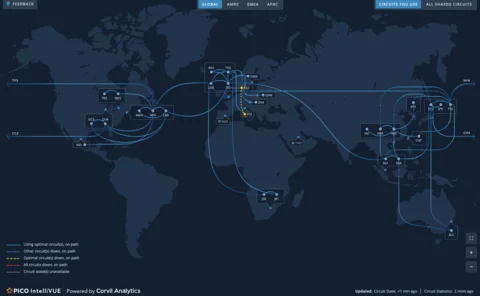Latency
Jump Trading spinoff Pyth enters institutional market data
The data oracle has introduced Pyth Pro as it seeks to compete with the traditional players in market data more directly.
Momentum is building for 24/5 trading. What does it mean for the future?
Stakeholders and industry bodies have progressed on some looming questions about overnight trading. Nyela examines what that and shortening settlement cycles means.
MayStreet founder sues LSEG for fraud, breach of contract
The complaint accuses the exchange group of “defrauding” MayStreet executives following the 2022 acquisition. LSEG “strongly refutes these claims.”
Terry Duffy on CME’s cloud future, takeover targets, and ... candy
CME CEO Terry Duffy explains the relatively narrow strategy that the derivatives exchange has taken under his leadership, especially compared to its peers.
Launch of Deutsche Börse’s midpoint dark pool delayed
The exchange group faces a roadblock as it awaits a reference price waiver from its regulator.
After acquisitions, Exegy looks to consolidated offering for further gains
With Vela Trading Systems and Enyx now settled under one roof, the vendor’s strategy is to be a provider across the full trade lifecycle and flex its muscles in the world of FPGAs.
What hedge funds are missing about messaging
When a mere microsecond delay can impact the bottom line, hedge funds need high-performance technology stacks and infrastructure. Himanshu Gupta outlines four key considerations for a firm’s messaging architecture.
New equity trading protocols want traders to show their hand
A new generation of trading venues has emerged with the goal of unlocking liquidity and improving the efficiency of trades.
Adaptive’s Aeron goes live on Microsoft Azure Marketplace
The messaging software used for building bespoke trading platforms is now available on Microsoft’s marketplace, making it accessible through major cloud providers.
Latency under the spotlight
Welcome to Latency under the spotlight, a series of three short discussions focusing on latency across the financial services industry from a number of different perspectives. Joining Victor Anderson is Stefan Schlamp from Deutsche Börse.
Dark horse: Deutsche Börse building dark pool
New functionality allowing exchange members to execute sweep trades comes hot on the heels of European rival Euronext launching its own dark pool.
The IMD Wrap: Blowing tires, engines and budgets in F1 and financial data
There are many similarities between Formula One and financial data—except when it comes to how much you can spend and how much spend contributes to success.
Hunting for reliable low latency, HFTs look to novel techs in 2023
WatersTechnology looks at advancements in market data latency technology and what role the cloud can play.
Multicast in the cloud—no longer a pipe dream
Colt Technology explains the process it went through to make it possible to distribute multicast market data in the cloud.
Getting up to speed: Shortwave Chicago-London link clocks under 25ms
Industry benchmarking body Stac reports audit findings on the latency and throughput of Raft Technologies’ Chicago-London links.
Has cloud cracked the multicast ‘holy grail’ for exchanges?
An examination of how exchanges—already migrating to the cloud—are working to solve the problem of multicasting in a new environment.
Waters Wrap: ICE, Nasdaq and differing views about cloud
As exchanges continue to embrace cloud, the decisions they make today will have long-lasting implications.
ICE to offer ultra-low latency data between the US and Europe
The offering will run eastward, connecting routes in the US with European markets in London, Frankfurt, and Bergamo.
Nasdaq moves second matching engine to AWS cloud
The exchange and its cloud partner are encouraged by the smooth migration so far—and also by capacity and latency improvements from running in the cloud.
Coming to America: Foreign agents seek to subvert domestic tech incumbents
Vendor consolidation has given more to power to those who already hold the most power in the US. Can overseas providers who’ve already succeeded in smaller markets bring back competition?
Smashing barriers: How shortwave frequencies are making trading firms faster
Improvements in shortwave radio frequencies could be a leap forward in the latency race. But given the costs and technical challenges, is it worth the investment?























